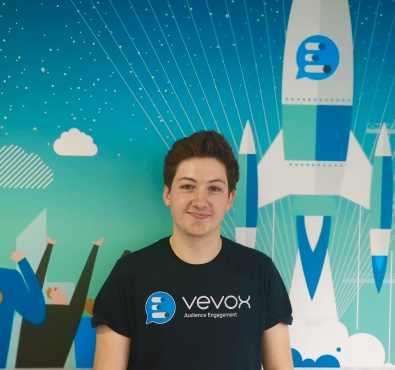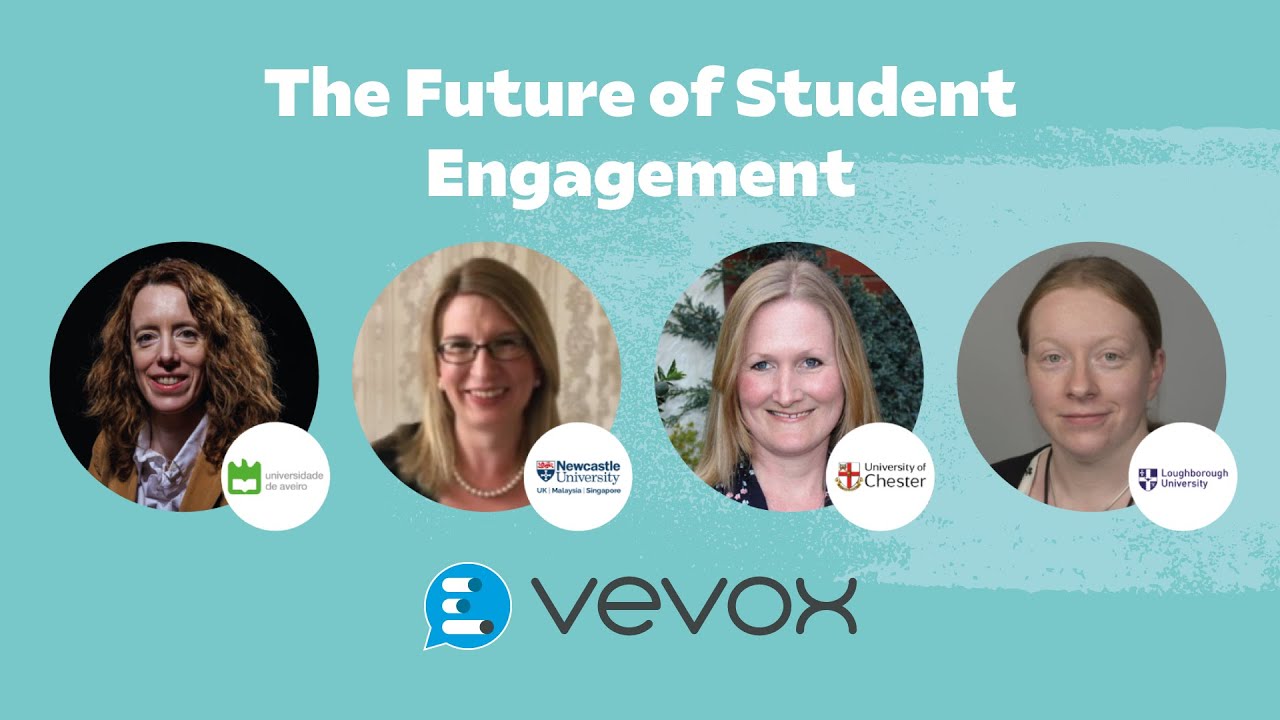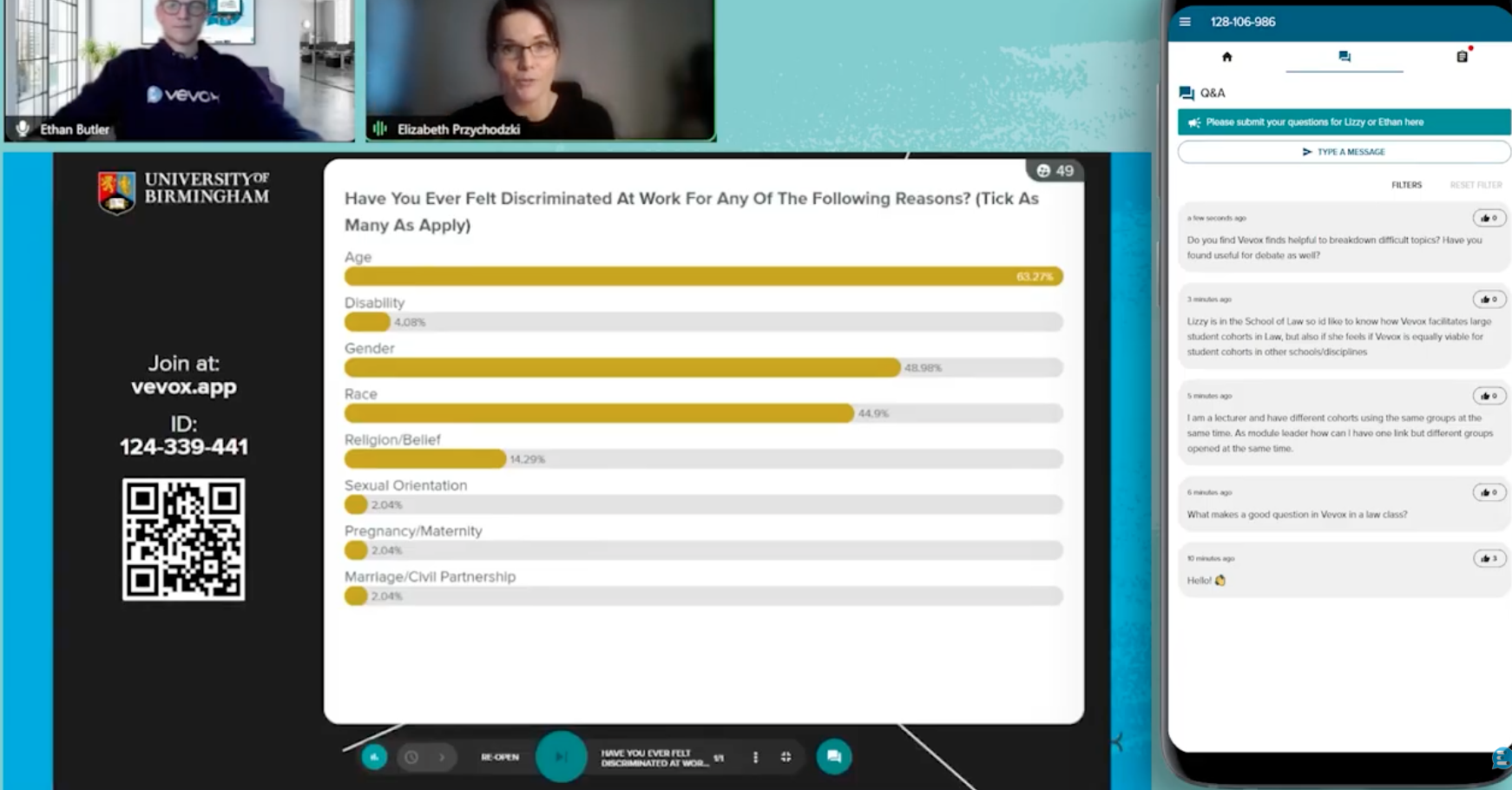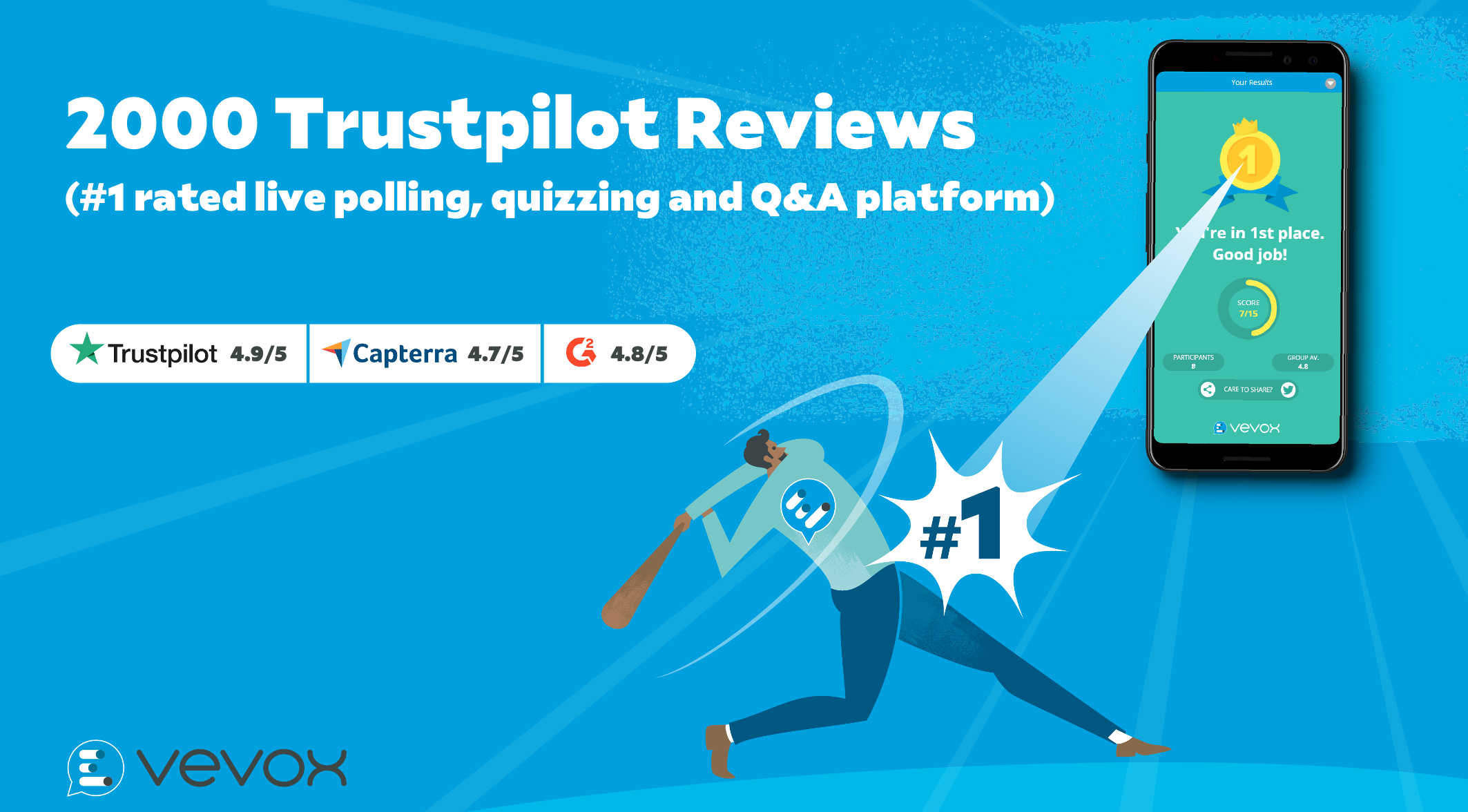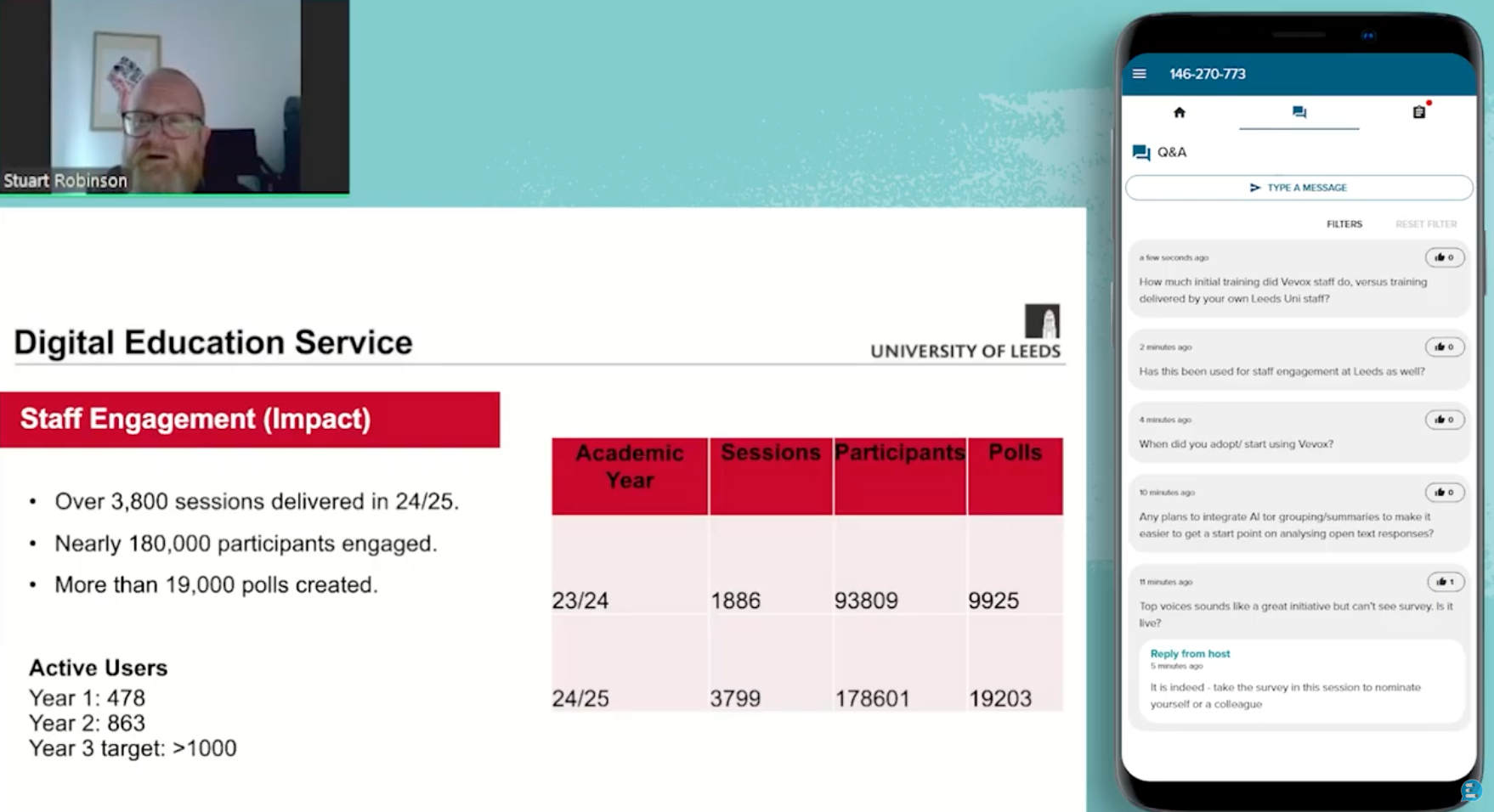How to increase student engagement in classes
Student engagement has long been a cornerstone of successful education, yet evolving challenges such as digital fatigue and inclusivity remain top of mind for educators worldwide.
In a recent webinar hosted by Carol Summerside from Newcastle University, expert panelists delved into the power of educational technologies, including Vevox, to address these challenges and redefine engagement. Their insights offer a roadmap to the future of learning, empowering educators to create thriving, inclusive environments for all students.
Why not watch the full webinar recording below to hear from the speakers themselves? Alternatively you can read our summary and key takeaway points below as well.
The future of student engagement: Panel session recording
Let's take a look at the key takeaways from this session and what these education experts said...
Breaking engagement barriers with technology
Panelists highlighted the critical role of interactive platforms like Vevox in breaking traditional engagement barriers. By enabling features like anonymous Q&A and live polling, educators can encourage participation from students who may otherwise shy away due to anxiety, fear of judgement or neurodivergent conditions.
For instance, Christina Stanley from the University of Chester emphasized how anonymity gives students the freedom to contribute without fear, fostering inclusivity. Large settings, such as lectures and public events, also benefit from interactive tools that keep sessions dynamic and engaging for diverse audiences.
 Image description: live word cloud of the audience sharing their background of role experiences
Image description: live word cloud of the audience sharing their background of role experiences
Christina Stanley, Senior Lecturer at University of Chester: "It's really nice because it provides anonymity. So it means that all students can ask questions, can answer questions without others knowing who they are, without knowing their identity and it just really helps everyone in the room to have a say and to get involved in the sessions."
But engagement isn’t just about participation. It’s also about accessibility Many of the speakers commented on this and how it can bridge a gap and create an equal playing field for a diverse audience.
Combating digital fatigue in modern times
In an era where students are inundated with technology, digital fatigue has emerged as a pressing concern. Webinar panelists agreed that the key lies in intentional application of educational tools. Not just using a tool because of the sake of it but applying it with a strategy and for a certain use case.

Laura Jenkins from Loughborough University explained that while incorporating platforms like Vevox resonates well with students, their use needs to be consistent and focused. Moving through tools too quickly or overloading digital activities could push students into burnout rather than engagement. Moderation and purpose is key. Consideration was a core word and theme that came through here.
Laura Jenkins, Lecturer at University of Loughborough (speaking on Vevox): "It's gone from sort of being a piece of technology that a few staff would use to now something that we do use university wide... (students) appreciate the quick response times to their questions and the fact that Vevox in general makes the lecture more engaging and a lot more interesting."
Using Vevox for formative feedback and inclusive learning
One of the standout benefits of interactive tools like Vevox is their ability to provide formative feedback. Educators can collect real-time data, identify areas where students struggle, and pivot lessons accordingly. This proactive approach replaces assumptions with evidence, allowing instructors to meet their students’ needs on a deeper level.
Susanna Kushina from the University of Aveiro explained how they use Vevox, "Some of the teachers use Vevox for evaluation where you can use it with questions or and others they use it only to check if the students are really paying attention to the classes and to get them more participative use of the technology in the lessons.
On the importance of using tech for inclusivity, Christina Stanley said: "Whenever I'm planning field trips with students, I'll use Vevox's Q&A so they can ask questions anonymously. This could include asking about things they might not feel comfortable saying aloud... like, 'Will there be toilets where we go?'. This makes them feel more confident about the field trip. If we can use educational technology in lots of different ways to make sure that those barriers are broken down, that's what I really want to work towards… to ensure that everyone can access the learning in the same way."
The AI revolution in education
The integration of AI into educational technology can be both an exciting and challenging prospect for educators. The panel discussed the use of combining AI with engagement tools promises tailored learning experiences that adapt to individual students’ needs. AI-driven platforms could analyze student responses, patterns, and preferences, offering real-time adjustments to understand students better.
 Many universities are using AI tools like AI quiz generators to assist the process or creating personalized learning experiences.
Many universities are using AI tools like AI quiz generators to assist the process or creating personalized learning experiences.
Universities like Newcastle and Loughborough are already exploring ways to utilize AI to optimize engagement strategies. From personalizing lesson plans to providing adaptive feedback, AI-powered platforms are poised to help how instructors connect with their students or shape their classes.
Practical advice shared by panel experts
The Q&A at the end of the session gave the panelists a chance to summarize the themes explored. They all offered actionable tips for educators looking to enhance engagement from their experiences.
- Set clear goals: Use interactive tools with specific objectives and set boundaries early doors to everyone understands the benefits.
- Prioritize inclusivity: Think about how your tools break barriers for neurodivergent or anxious learners by fostering safe spaces for contribution.
- Balance tech use: Avoid overloading students with endless digital activities and thinking about how to get the most of the technology to combat digital fatigue.
- Experiment with AI: Explore opportunities to incorporate AI-driven features for more personalized student approaches rather than avoiding it.
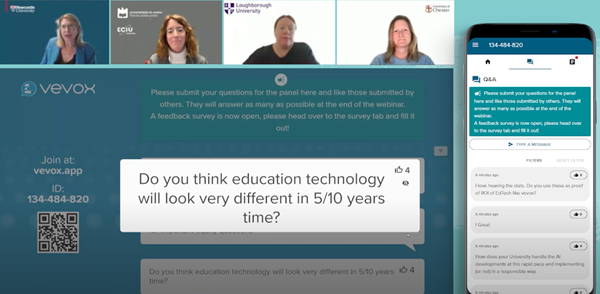
The future of student engagement lies in utilizing technology not as a replacement for traditional teaching but as a tool to bring learning to life. As highlighted during the webinar, interactive tools like Vevox are reshaping education by focusing on inclusivity, formative feedback and allowing students to have a voice. Are you ready to make your teaching unmissable? Explore tools like Vevox and start designing inclusive, student-centered learning environments today!

